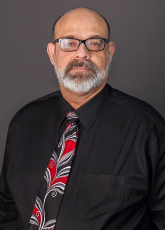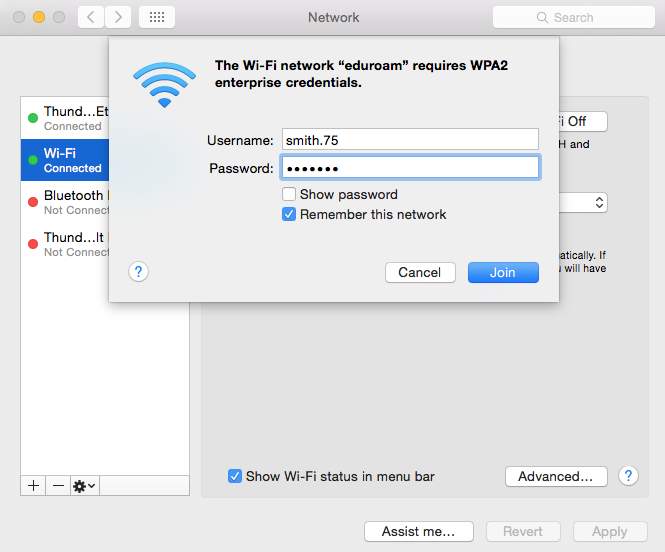Any traveling college professor, researcher, student or faculty member is familiar with the struggles of obtaining wireless access at a different campus:
How does this university issue visitors a Wi-Fi password?
How secure is the network?
But for about a decade now, many institutions around the globe have increasingly turned to eduroam.

Eduroam — “edu” for education, “roam” for roaming or traveling — is a secure, worldwide roaming access service that allows students, faculty and staff from participating institutions to connect to the internet anywhere through their home campus. Eduroam is available in nearly 80 countries and at thousands of institutions, including many throughout Ohio.
“The idea is really simple: It’s enabling people associated with educational institutions to easily and securely get wireless access no matter what institution they may be traveling to,” said Mark Beadles, OARnet’s IT security officer. “Almost everything we do in education now takes advantage of computer networks, and wireless is getting ubiquitous.
“Students can concentrate on taking a course or communicating with classmates or whatever. They don’t have to worry about, ‘How do I connect to wireless?’ Once you start using eduroam, it’s so easy to use that you almost don’t notice it.”
To begin using it, a user simply logs on to eduroam locally using his or her campus’ credentials and that person’s laptop or phone remembers the eduroam SSID (Service Set Identifier) just like any Wi-Fi login. The person can be at their home institution, visiting another campus, at a Starbucks or in another country. Not only does it make life easier for users, but it’s also a more secure way to gain wireless access because it uses a strong authentication rather than a possibly insecure network.
Research and education networks within each country oversee eduroam use. Internet2 is the governing body in the U.S., which includes everything from setting the standards of technology and privacy to how the infrastructure is implemented.
Eduroam was started in 2000 in Europe, where higher education institutions are more densely concentrated.
“Institutions in Europe are closer together and people are crossing between country borders often, so they had this problem about connecting to networks in neighboring institutions that they’re not directly affiliated with,” Beadles said. “They came up with an idea to use authentication technology in combination with the wireless to get people onto the networks.”
It quickly grew as visitors to Europe saw how convenient it made logging onto wireless networks.
From a user’s perspective, the benefits are fairly clear. From the perspective of an IT department, two situations in particular make eduroam important: One is when students and faculty travel overseas or throughout the nation; the other is closer to home, on shared campuses where two or more institutions need to figure out how to provide wireless access that won’t trip over itself.
Ohio University, for example, shares campuses across the state with other institutions. It adopted eduroam in 2014 as a way to make wireless access simpler on the Heritage College of Osteopathic Medicine’s Dublin campus that OU shares with Columbus State. Ohio University now uses eduroam on all its campuses.

“The Dublin facility was a big driver for us adopting it because not only do we share it with Columbus State, but there are also other institutions using some of the classrooms,” said Duane Starkey, assistant CIO of infrastructure at Ohio University. “Not having all the overhead of trying to administer access to the wireless network or coming up with user IDs, it’s so much easier if the institution is running eduroam.”
A number of buildings dot the Dublin campus, but one of the newer ones houses a program through the health sciences department. Throughout the building there are a number of shared spaces and resources, making eduroam even more beneficial to students and faculty.
“We had this original scenario of trying to share as much as we could from a device facilities standpoint, and we needed a mechanism we could use to give them access to the network,” Starkey said. “I haven’t heard anything negative about it since we rolled it out.”
Ohio University shares its Zanesville campus with Zane State College. Bryan Baker, director of network and security services at Zane State, said the adoption of eduroam was a huge customer and student satisfaction piece.
“Previously, it was if you’re on the Zane State network you have one thing, if you’re on the Ohio U network you have another, and there were huge isolated sections,” Baker said. “So you can only imagine the frustration you’d get when you walk in some place and its Wi-Fi with customer purchase only. It’s really a big help to the students.”
Another example of shared campuses includes Miami University, which not only shares eduroam with regional campuses but also with Talawanda High School in Oxford.
“We are located in a college town and we partner with Miami University a lot with student placement, student teaching, etc.,” said Matthew Rand, Talawanda’s IT coordinator. “It allowed another source for Miami students to connect with while on our campus.”
When it comes to traveling out of Ohio or out of the country, eduroam is a major benefit to students doing a semester abroad or faculty traveling for any reason. The University of Rio Grande, for instance, has many students and faculty that travel to Wales regularly.
“It’s small but traveling to Wales is a significant part of what they do,” Beadles said. “It used to be they needed to get anyone traveling their own accounts with lots of IT coordination. Now they just use eduroam.”
The University of Dayton, meanwhile, has sister campuses in San Antonio and Hawaii, and not having a tool like eduroam made things difficult until it was deployed.
“It was a great project that began with conversations with our sister campuses,” said Tom Skill, CIO of the University of Dayton. “We’re sending people back and forth frequently and we’re always having problems accessing networks. So we said, why don’t we get eduroam?”
Skill said once that question was asked, they immediately turned to OARnet and the process became seamless.
“OARnet’s role was invaluable,” Skill said. “They were great partners. And for our students and faculty to be able to connect to eduroam as a seamless experience is phenomenal.”
For more on eduroam, check out our newest video!
###
Written by Ross Bishoff